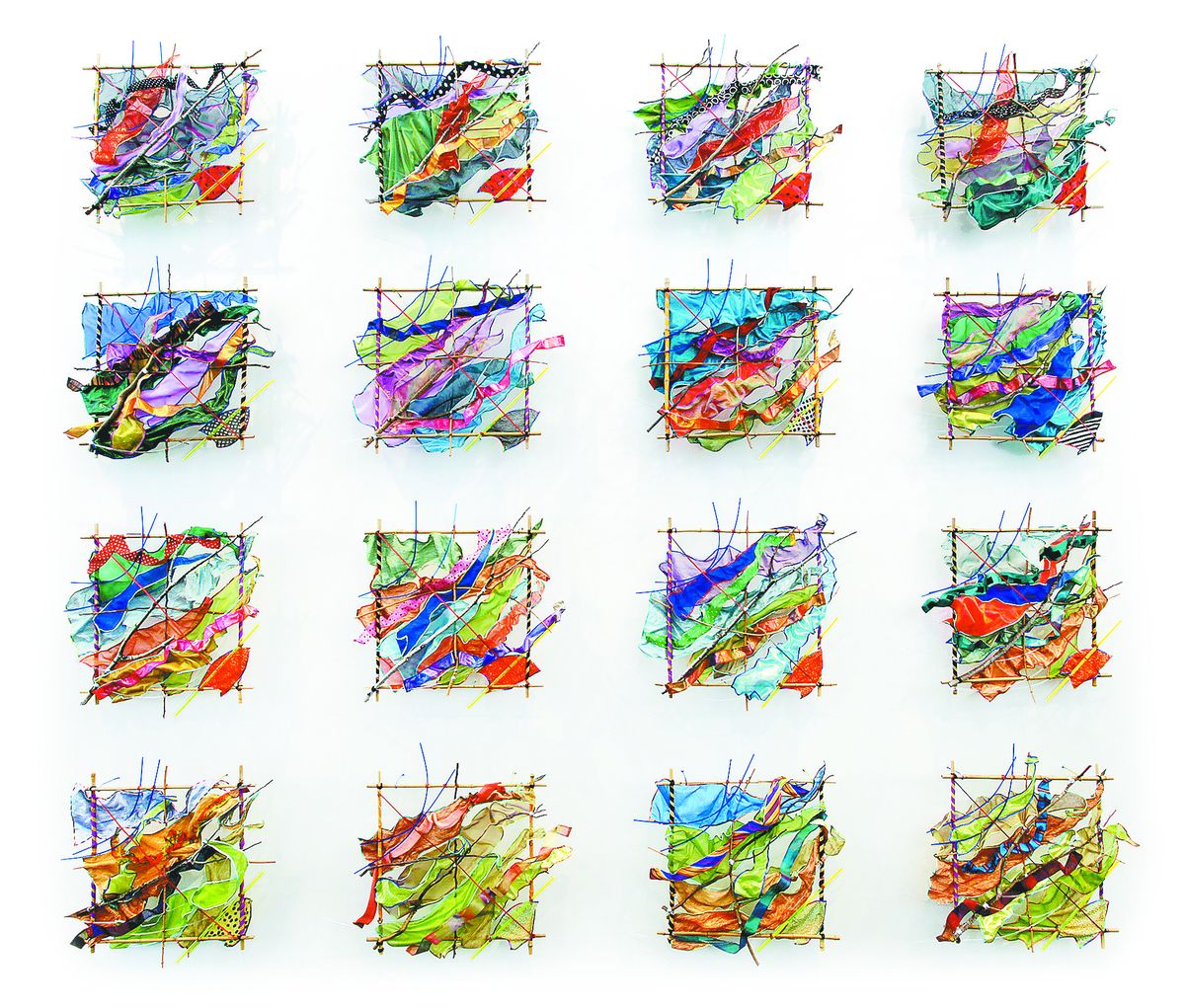Easily accessible Inland Crafts stays true to its roots

“That’s not how most of our brains work,” explains Spokane fiber artist Louise Kodis.
Which is why Inland Crafts is an unusual success story.
Since its inception in the early ’80s, the annual artist-run event has generated $2.8 million in sales and elevated the bar for holiday gift buying. This weekend’s edition will feature more than 60 distinguished regional artists, including sculptors, jewelers, ceramists, woodworkers, photographers and metalsmiths.
Inland Crafts began modestly as Inland Craft Warnings when Kodis and a friend invited five of their peers to join in re-creating the atmosphere they’d experienced at big-city craft markets. The site they chose was South Hill’s elegant-but-antiquated Glover Mansion.
“The worst thing was there wasn’t enough light available,” Kodis recalls, “and there weren’t enough outlets to bring in more light.”
The event moved several times and shortened its name before sinking roots at the spacious Spokane Convention Center. But it hasn’t grown as large as the area’s other premier craft gatherings, the Northwest Museum of Arts and Culture’s ArtFest and Coeur d’Alene’s Art on the Green.
“We’ve intentionally stayed small,” says Kodis, “offering an approachable number of artists whose work you can really look at seriously, think about and go back and look at again before you buy.
“Also, I think we have the best quality,” she says. “We’re the most selective of any sale in this region. And all the work you see was made by the person you’re talking to. That’s really important.”
Kodis, who grew up on a farm outside Harrington, Wash., is best known for her public commissions. She has more than 50, including “Conversations Between Clouds” at Spokane International Airport and “Inland Northwest in Full Color,” unveiled last week at the Spokane Convention Center.
She spoke with us about her career and the business of art:
Q. When did you first see yourself as an artist?
A. When I was about 5. I’ve had a studio since I was a freshman in college. I’ve been a full-time artist since 1974.
Q. Why did you choose fabric as your medium?
A. When my children were babies and toddlers, there’d be lots of interruptions as I tended to their needs. So my acrylic and watercolor paintings would linger, slowly drying, and it wasn’t easy to go back and work on them. Fabric just waits.
Q. When did you first think of yourself as a professional artist?
A. It was 1974. At the time, I was coordinator for a parent cooperative preschool, and I said, “I’m going to devote myself to earning my living from art.” Within a year I had been accepted into a couple of national juried contemporary craft markets.
Q. What’s your typical schedule?
A. I work every day, but I can’t tell if it’s work or play. I have deadlines, like everybody else. so I put in about 12 hours. I’m always working at something to do with the artwork, whether it’s finding the ingredients or seeking commissions or taking care of the insurance – all of the things one must do.
Q. Do artists tend to be good business people?
A. No. Most artists don’t like selling their own work. Most don’t like working on commission. And most are not good at thinking how long it will take to make something, how much it costs to make and what it should sell for.
Q. How many artists in this area would you guess make a living exclusively from art?
A. I’d be surprised if there were more than a dozen. A lot of artists also teach or have classes in their studio, or have whatever part-time job they can find to support their art.
Q. Has the recession affected art sales?
A. I think so. A little less impulse buying. However, the people who feel art is really important in their life are still buying.
Q. Why should people buy art?
A. I buy art because it feeds my soul. I just bought a book yesterday – “Tear, Fold, Rip, Crease, Cut” – about paper art. I’m not going to look at it to get inspiration for my own work. I need it to fill my heart.
Q. Through Inland Craft and your career, you’ve demonstrated good business skills. Why are you different?
A. I can’t say my parents taught me directly. But as farmers, they owned their own business. They were also frugal, which goes well with being an artist. And along the way, I met people who shared their experience about how to run a business, what advertising was worthwhile or how many times you should give away your work so you’re more visible in the community.
Q. What advice would you offer aspiring artists?
A. Do all the right things that business people must do. Don’t make exceptions for yourself, thinking, “Oh, I’m an artist. If I don’t feel like working I don’t have to.” You can’t do that. You have to have liability insurance. You have to have inventory, or else you can’t start the next job. You have to get a hefty down payment before you start a commission. You have to keep your promise to get a piece to the gallery on time. That way you establish a reputation, just like a grocery store.
Q. What is the best part about being an artist?
A. It’s not just about producing things. Every part of my day is connected with the other parts, whether I’m working in the studio or balancing my checkbook or relaxing in the garden. And I fill my house with things I like to look at. To me, being an artist is a way of life.